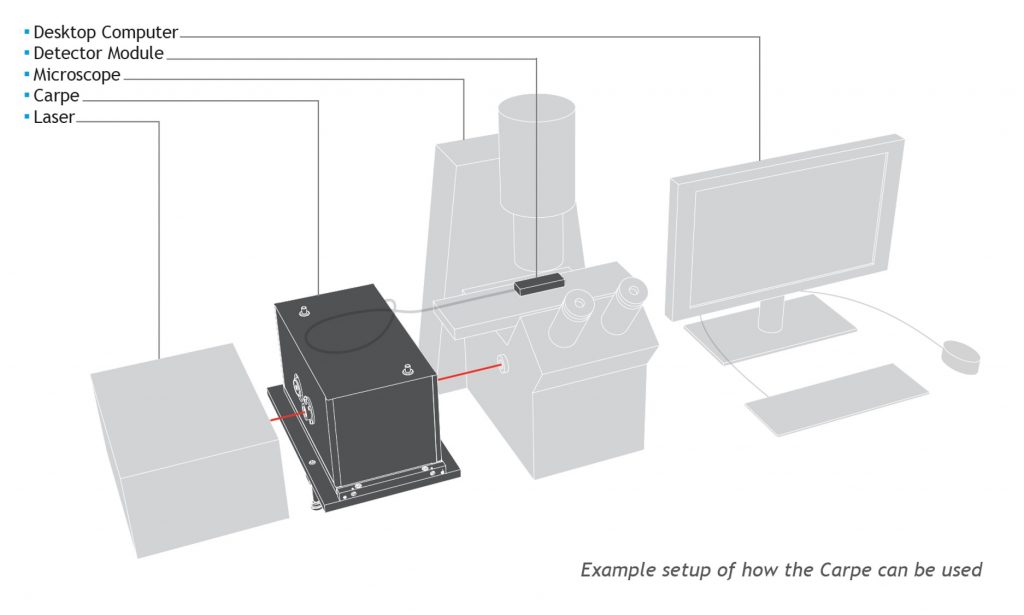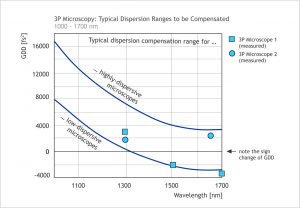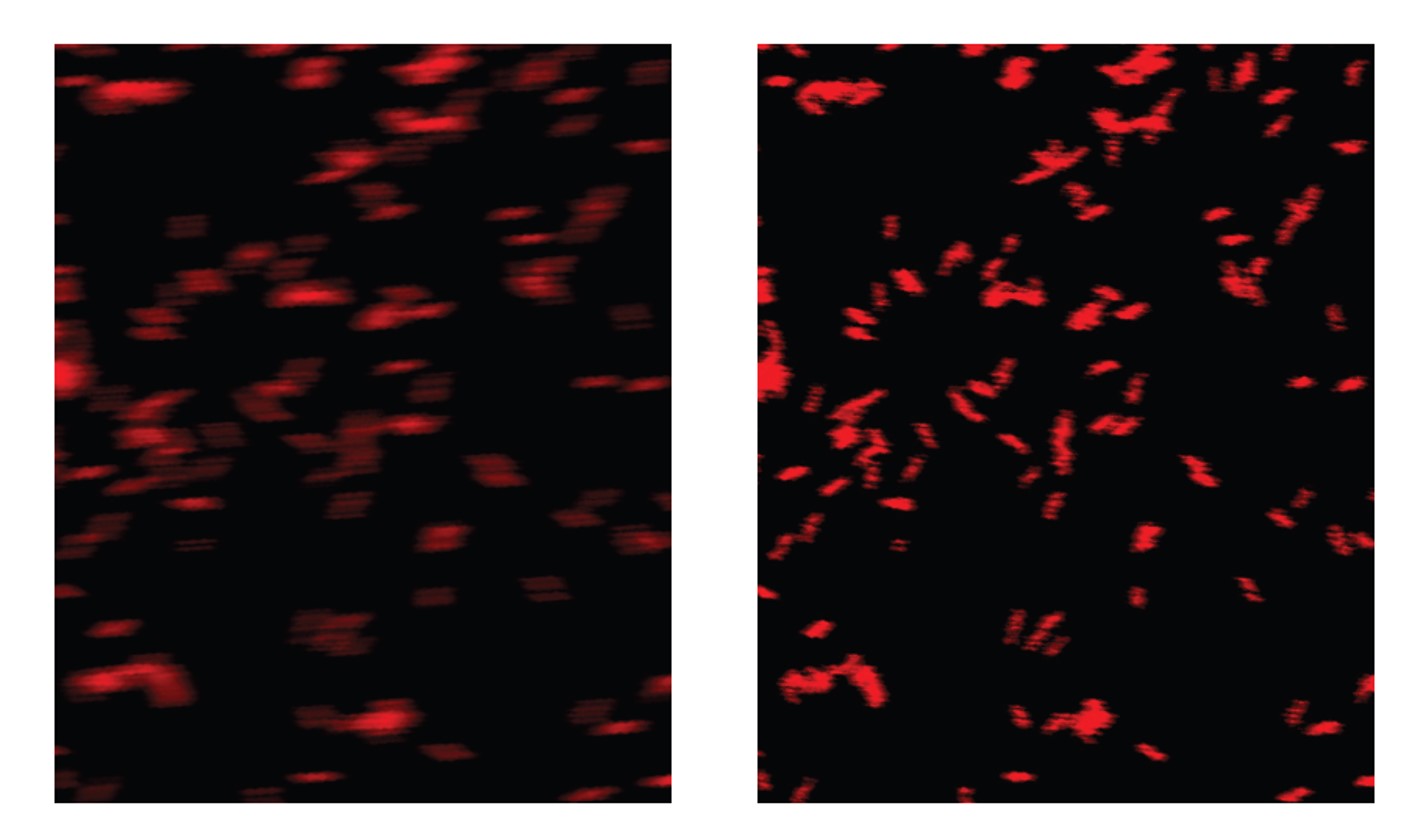Measure pulse widths at the sample position and point of microscope input
Measure average power at sample position
Estimate the peak power in conjunction with the pulse width
Option: Short working distance, e.g. for immersion objective lenses
Option: femtoControl for optimizing the duration of femtosecond laser pulses
| 제조사 | APE-BERLIN GmbH |
|---|---|
| 가격 | TBD |
| 문의 | TBD |
NIST Traceable Calibration
Laboratories and manufacturers are often faced with systematically establishing an unbroken chain of calibrations to specified references. All APE autocorrelator models are calibrated to a traceable standard in accordance with NIST (U.S. National Institute of Standards and Technology) measurement traceability specifications. A printed and signed calibration certificate is provided with each pulseCheck.
Master Pulse Broadening at the Microscope
The Carpe autocorrelator measures the pulse duration at both the sample location and the input of the microscope. A comparison of the pulse widths obtained at these two spots enables you to calculate the pulse broadening effect. This effect is caused by dispersion of the microscope optics, but also depends to a large extent on the pulse width of the incoming laser beam.
Power Detection at the Sample Location
Power detection at the sample location supports systematic and quantitative studies which explore how laser power affects samples or the fluorescence lifetime of probes.
Optimize Microscopy Imaging
By examining the influence of the laser pulse duration, the power, and the dispersion of the microscope optics, you can fine-tune and optimize microscopy imaging at the relevant spot. These measurements can be also done using large NA (numerical aperture) or immersion lenses.

Better Imaging with Dispersion Control
Application Example
Carpe in combination with femtoControl can help to achieve more crisp and clearer microscope images. The increased information content of the images is due to a solution that detects and corrects inevitable dispersion effects when using femtosecond laser pulses for multi-photon microscopy.
The laser pulse duration is measured at both the input of the microscope and at the sample location under the microscope. This allows to detect dispersion effects and to compensate them with femtoControl.
Furthermore, power detection at the sample location supports systematic and quantitative studies, which can help exploring how the laser power affects the received signals and images.


